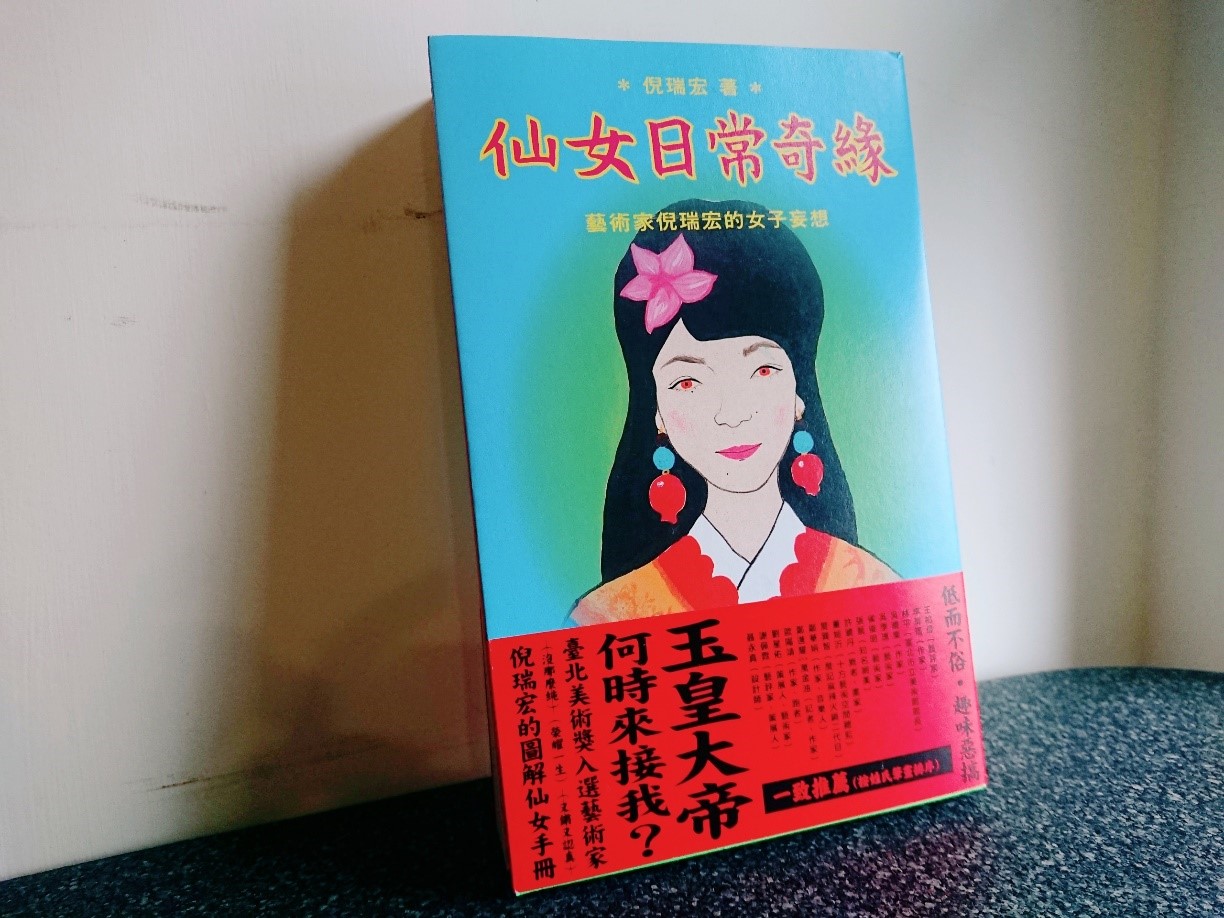
Do you think that art is all incomprehensible, deep, or pretentious stuff? This book might change your view. Born in 1990, the author Jui-Hung Ni is not only an artist who specializes in fairy research, but she is also a temple-certified fairy.
With the title of Master of Taipei National University of Arts and impressive experience in participation in illustration design for the Golden Melody Awards, Jui-Hung Ni’s inspiration of creation, however, is from things with which we are familiar and they are a bit local, such as the electric lanterns in temples, the beauty pageant endorsing rural agricultural products, bizarre videos on YouTube. She is like normal young people who like surfing on internet and watching novel things.
Ni’s works have a type of black humor of internet memes. She is good at using colorful but bizarre daily scenarios to depict life’s joy and sorrow. Not only does she paint and create installations, she also studies on fairies by action. She even joined the fairy competition held by Luermen Matsu Temple in Tainan. “I’m grateful for Mazu’s blessing for helping me win the fairy representative in 2014 so I can show off the title of ‘fairy certification’ for life now. ”, she wrote in the book.
This wonderful book is the culmination of years of creative work and a studying note on fairies by serious field survey. It leads the readers from the daily lives into the fantastical wonderland of fairies.
Not just in ancient myths, there is full of the incarnation of fairy in modern society
Numerous young girls dream of becoming fairies. After growing up, we use the term to describe elegant women with fresh temperament. In other words, fairies are the ideal women everyone is longing for, like Internet celebrities on IG, idols and stars. What on earth is the concept of fairy? How has her image been shaped?
This book is a super serious research on fairies. It is divided into four chapters. The first chapter focuses on the classical fairies of traditional temples, traces their origins, and describes the process of the fairy competition held by temples. The second chapter observes, from various angles, the abode of fairies – the Penglai Island (蓬萊仙島), the reason Taiwan is called the Penglai Island, and the story the author passes by Penglai city in Shandong (山東), China.
The third chapter is an in-depth exploration of the image of “fairy” in modern-day jobs. For instance, the image of fairies endorsing rural agricultural products (such as grapes and flowers) and the flight attendants which is the job often considered most closely linked to the image of goddess. The last chapter is the artist’s personal love review note. Perhaps, the fairy represents the perfect dream lover in our minds and our perfect selves.
Art is high-class trash. What is useless is most useful
The chapters use the events the author experienced and words, leading to her illustration and her installations so that readers feel as if they walked into the artist’s life and understand that behind the bizarrely funny illustration, there are bitter and sweet vicissitudes of life.
I’d like to especially recommend a section from the first chapter called “The Shiny Life Advice of Fortune Slips”. It describes the creation in the exhibition Ni held at Eslite bookstore where she showcased a fortune slip machine and the fortune slips. Although readers can’t draw their own fortune slips through the pages, reading the heartfelt (albeit a bit nonsensical) life advice from the slips may prove more effective than the self-help books on the market.
As Ni wrote in the preface, “For me, good artists are human beings who create high-class trash.” Trash is useless, but aren’t useless things often the most fun and memorable? This curious book is also the same. It won’t bring practical benefit somewhat, but it will unleash the fantastical and imaginary wonderland sealed in our brain. Walking into the wonderland is also like walking into our own life more profoundly.
Artist Jui-Hung Ni’s webpage:https://juihungni.carbonmade.com/
